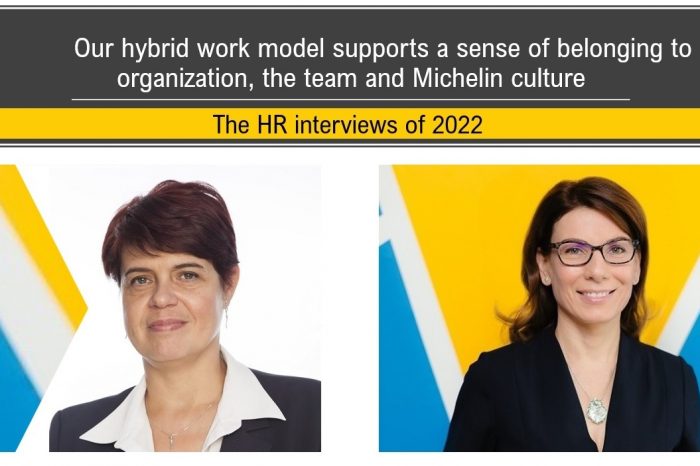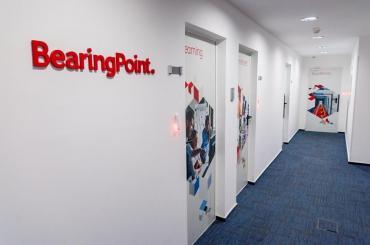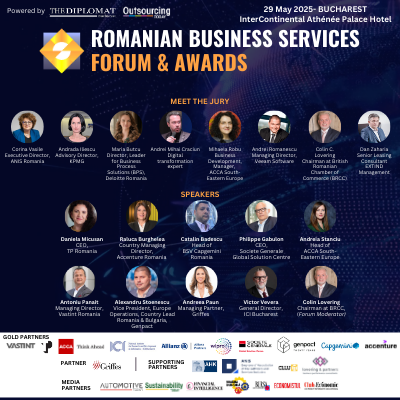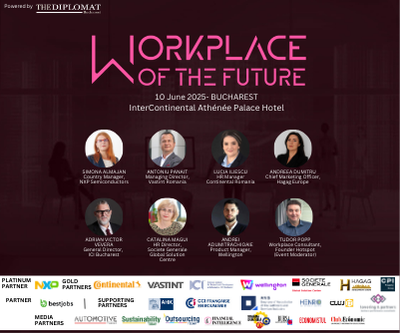Cristina Paveliu, Michelin Corporate & Business Services: We need to encourage people to think differently, try new things, adapt to challenges, and fix problems

Learning and development (L&D) programs and initiatives have been headlines of corporate agendas in 2020 and continue to do so in 2021 as well, as businesses adapt to the ways and needs to learn of their employees and business partners. Also, studies of this year showed that improving L&D is a critical initiative to 86% of companies.
In this context, we recently talked in a comprehensive interview with Cristina Paveliu, HR Manager, Corporate and Business Services, Michelin Central Europe about then latest LD trends run within the company.
The opinions benefited from the contribution of Dorin Enache, Competency Manager Corporate & Business Services at Michelin.
Learning & development is at the heart of our people strategy, in Michelin. Even more so, when we speak about a shared service center type of activity, where everything is about people. When working on the strategy to go forward, we make sure to cover all spectrum of development and for all types of interventions, but in the same time making the appropriate choice of what works best in our context and organization maturity. 2020 gave us quite some challenges to work with, and we needed to find ways to continue the development interventions already started, and adapt the rest to an entirely different context.
Customer centricity is essential in a shared service center
Our focus is spearheaded by two very important initiatives, that will continue to be applicable in 2021 as well.
For our managerial population, we have a strategical leadership model of competencies and skills, which focuses on how our managers create engagement in the team, empower colleagues to strive for excellence, are self-aware of the impact of their behaviors on business, and make sure they are oriented towards achievement. This is even more true in the current context, when managers need to know how to listen more to their team members and colleagues, be more empathic and understand that their own behavirous may impact significantly the state of mind of the collaborators.
For all our employees, the focus is on three key competencies – customer centricity, teamwork&collaboration, and problem-solving.
Customer centricity is essential in a shared service center where we provide support services to front line departments. It’s really easy to forget who the end customer is and how your action affects him down the line.
Teamwork & collaboration are important in the current context. Regardless of how comfortable we are working from home, we can see that the bonds between team members are started to be affected by not interacting directly for 8 months.
And last but not least, problem-solving is important as our goal is to increase effectiveness and efficiency of our processes , and to achieve that, we need to encourage people to think differently, try new things, adapt to challenges, and fix problems.
It’s obvious that in 2020, everybody in L&D is trying to find ways to deliver remote learning interventions
Some people like it, some don’t – and there are arguments for both .
When delivering in a digital environment, the advantage is that you can build very accessible learning content. An e-learning or video tutorial can be accessed from every device, anywhere at any time.
But there are limitations regarding the level of impact in learning. You can teach learners what they need to know, also make sure they understand what they have to do, but without the human touch of a supportive manager or a trainer, learners might have difficulties applying the new concepts.
As a rule of thumb, don’t digitize learning just for the sake of being more digital.
2020 has been an interesting year for L&D. A lot of resources have been redirected to critical activities
In our case, this meant to put our learning interventions in improving competencies that were directly linked to competencies found in the job description, and where the need has been identified.
We’ve chosen to put on hold other programs, in favor of what was critical in the new context. Obviously, that meant our focus was a lot related to improving digital competencies for all, so programs such as ‘Power BI’ and ‘Excel’ where delivered both with support from outside, but also with our internal experts. The use of collaborative tools was another area of focus, we’ve developed rapidly eLearning programs that were constantly updated to reflect the new developments.
Language courses were important in 2020 because we are an international shared service center.
So the focus in 2021 will be on programs that we put on hold, behavioral competencies training and why not, instructional design training for experts so they could keep sharing their experience.
We will continue also to invest in equipping our people with the digital skills needed for tomorrow’s world. Currently, we’re building our learning & development strategy for next year, and digital will be an important element of it.
In our organization, L & D processes co-exist and are linked with all the other HR processes, starting from the recruitment of new collaborators, to onboarding them, further developing and motivating them
The main challenges for L & D are to make sure that the interventions deployed best respond to any of the particular stage in the professional life of our people. Let’s take for instance the case of talent acquisition – a successful recruitment means that the recruiter, by using the available tools, is able to predict how well the future colleague will perform in the role. They do this not by looking into the crystal ball (although, sometimes this might be really helpful J), but by measuring the pre-agreed competencies considered to be critical for the role. The cycle is completed after the new colleague is validated in the role and the information is fed-back to the recruitment team, via L & D. So, you see, this is a continuous cycle, which is constantly improved by taking into consideration feedback coming from L & D and the hiring managers.
This is just an example, but it’s the same with all training programs. It’s really hard to measure the ROI of learning, but at least are the L&D programs useful? Are they “Just in Time” or “Just in Case” training programs?
Those are the challenges that an effective L&D department focuses on.
















